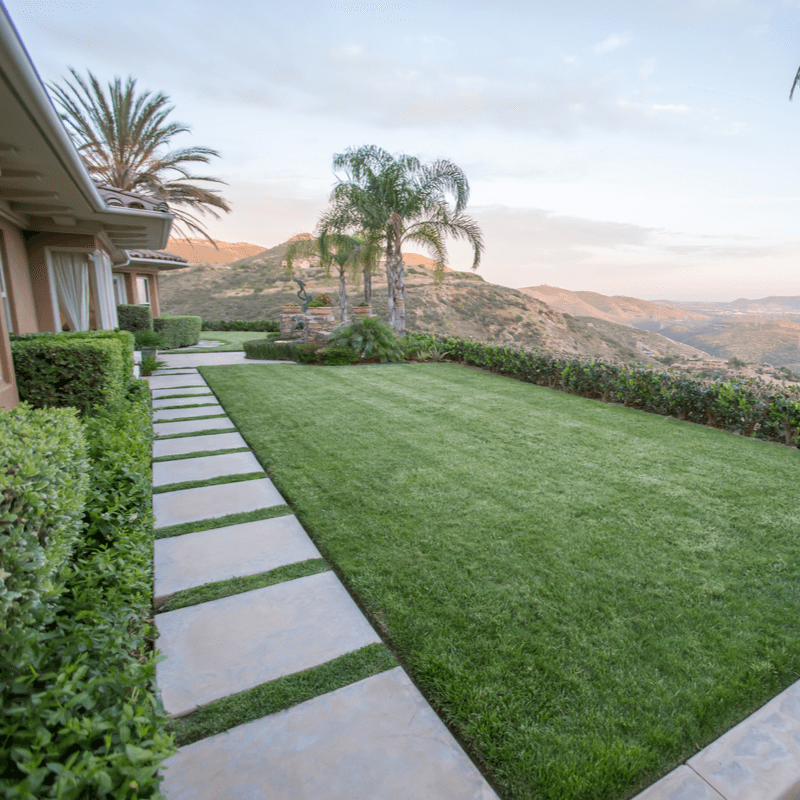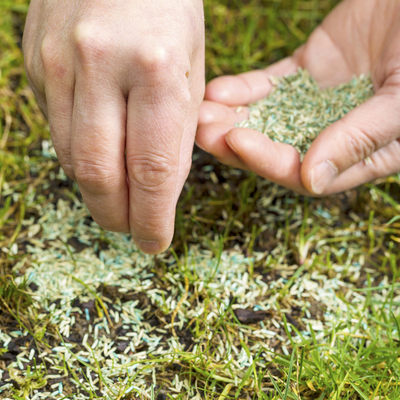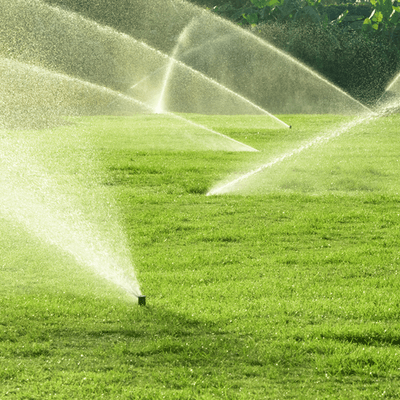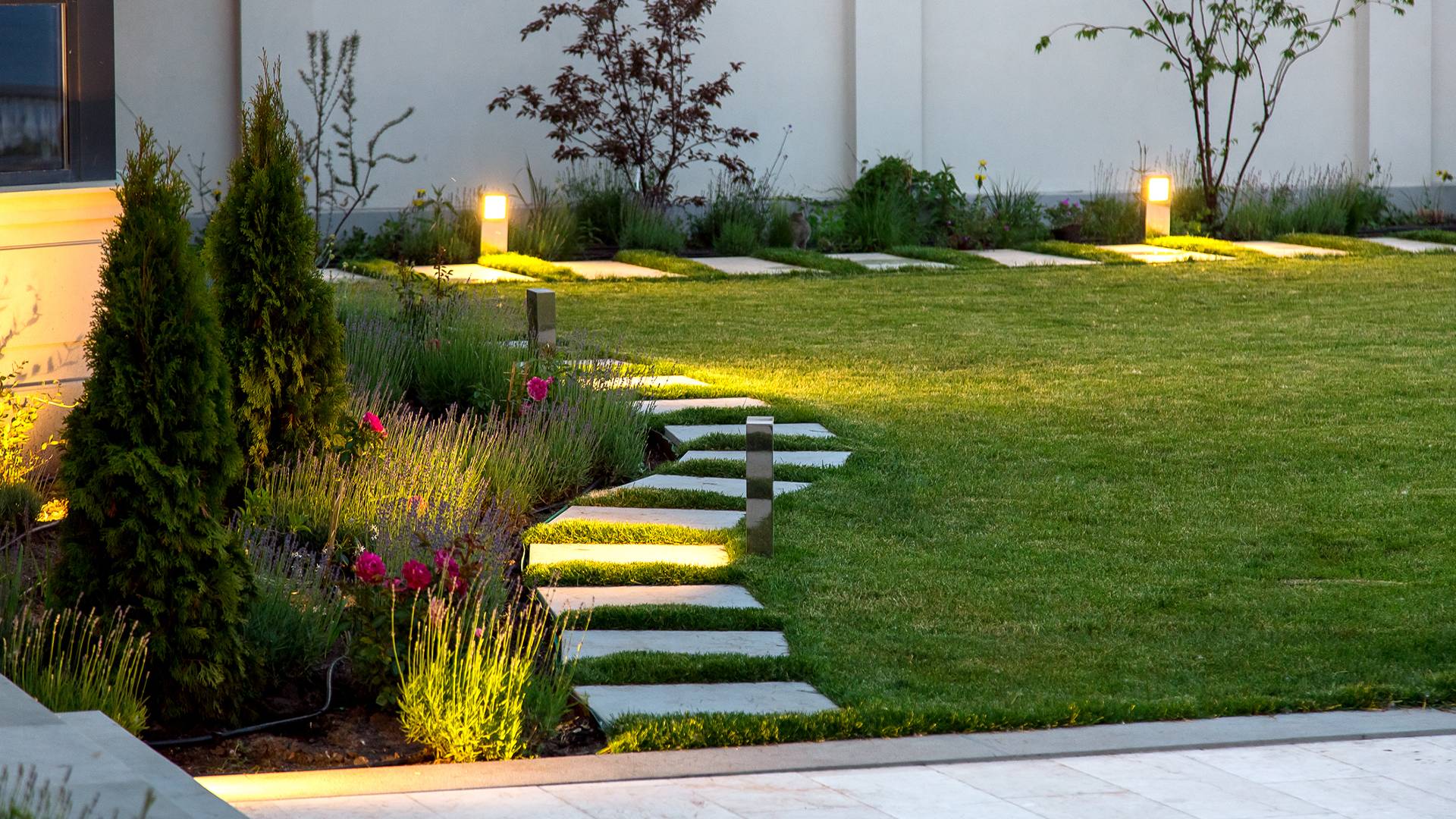
The drought in California shows no signs of slowing down. Unfortunately, it’s only going to continue, thanks to climate change. All that heat can take a major toll on the health and appearance of our turfgrass, leaving large patches of dead or dying brown grass. Thankfully, the lawn care services of Lawnscape System will restore your grass back to health. Here are some things you should know about heatwaves and turfgrass.
How Extreme Heat Affects Southern California Lawns
Heat Damage Compounds Other Issues
Heat damage, also known as lawn scorch, creates brown grass that dies off. This often results in bare, exposed earth. Heat damage is tough enough on its own to withstand, but other factors contribute to it.
Condition Of The Soil
If the soil quality is poor, your lawn is less likely to bounce back. Your lawn needs nutrients just as you need electrolytes and other minerals after a hard workout or being outside for an extended period.
Extra Stress
Mowing more often than necessary could also be contributing to the problem. Over mowing stresses grass, and stressors make them more susceptible to things like scorching. Another common stressor is foot traffic. The more people or pets walk on your lawn, the faster the soil will become compacted. Compacted soil is hard and makes it difficult for things like air, water, nutrients, and sunlight to penetrate the root zone of the turfgrass.
Competition
If your lawn has to compete for nutrients with other plants like flowers or trees, it may not be getting adequate nutrition. If your lawn has lots of bare areas, it gives weeds a chance to spring up. Weeds will not only ruin the look of your lawn but will also compete with grass for minerals, choke out the grass, and become an all-around nuisance.
How To Repair Heat Damage To Lawn
Seeding
If your lawn needs to be thickened up after a heatwave, overseeding will help. It’s ideal to distribute seed after a core aeration* treatment. Aeration is an excellent part of any lawn care program – even in the best of weather. Core aeration* will break up compacted turf and any thatch in the lawn. This is done using a specialized machine, called an aerator, to remove hundreds of tiny plugs of soil from the lawn. These tiny holes not only improve the health of your existing lawn but also allow any freshly scattered grass seed to establish and grow more easily.
Weed Abatement
Our products will ensure that tough broadleaf weeds and unwanted wild grasses stay out of your yard. They can be difficult to eradicate, especially after a heatwave when there is little competition from the parched turfgrass.
Pest Control
When restoring your lawn after a drought, the last thing you want is for the lawn damaging insects to destroy it again. Surface insect control will keep common lawn eating pests at bay.
How To Protect Your Lawn From Future Heatwaves
There are several key things you can do to help guard against future heat problems.
Stick To A Watering Schedule
If you’re not watering correctly – either not often enough, long enough, or at the wrong time – you could be leaving your grass parched. For more on this, check out last month’s blog on best practices for watering your California lawn in summer. You’ll know your grass is getting adequate moisture if the grass blades spring back quickly after walking over them. By watering correctly, you’ll teach your grass to be tough.
Don’t Over Mow
As mentioned above, one of the common things homeowners do that compounds heat damage is not mowing correctly. Raising the height of your mower is one way to improve the endurance of your lawn. Ideally, 3 – 4 inches and once per week or even less. You should also never remove more than the top 1/3 of your grass’ height. Longer grass also tends to be greener in color. It puts less stress on the grass blades. Grass that is frequently cut needs to use a lot of energy on regrowing when it should be using that energy to grow a more robust root system. If possible, you should avoid mowing during a heatwave altogether. The hotter the temperature, the more likely the air quality will suffer. Ozone action days were created for just such times. By mowing during this time, you’re actually negatively impacting the health of you, your family, and your community.
Don’t Fertilize
Fertilizing during a heatwave can burn the lawn. Wait until the heatwave has passed before applying fertilizers yourself. If you’re not sure, ask one of our lawn fertilization experts!
Find Lawn Care Services Near Orange County
If your lawn is experiencing heat damage, we can help! Lawnscape System‘s lawn care program has all the nutrients your turfgrass needs to recuperate after extreme heat. There’s no need to tolerate ugly dead grass. Let’s put our expertise to work for you! Give us a call at (714) 909-1836 or leave us a message online. Be sure to check out our blog page, where we post monthly articles on things like best practices for watering your lawn and other helpful topics. And don’t forget to like us on Facebook and follow us on Instagram to see photos of our work and take advantage of special deals.

